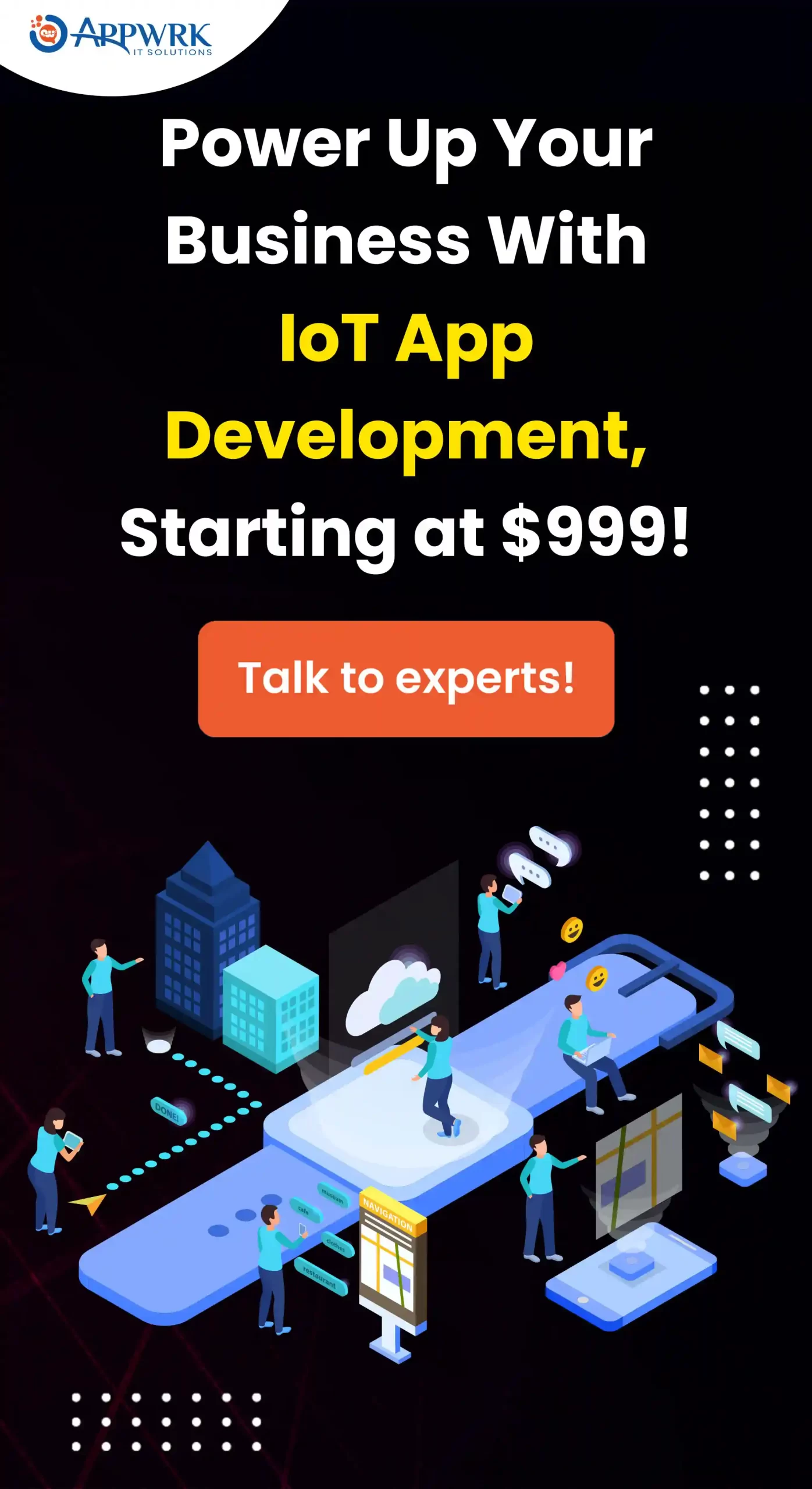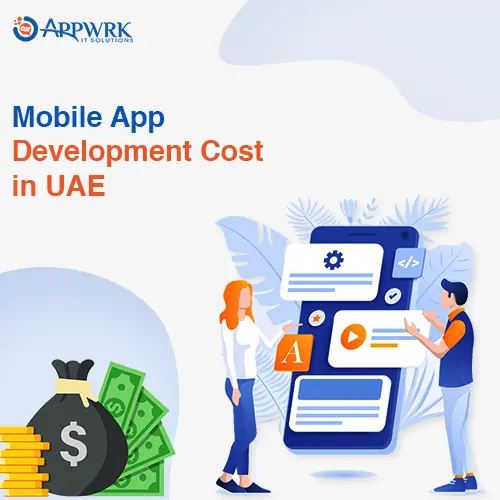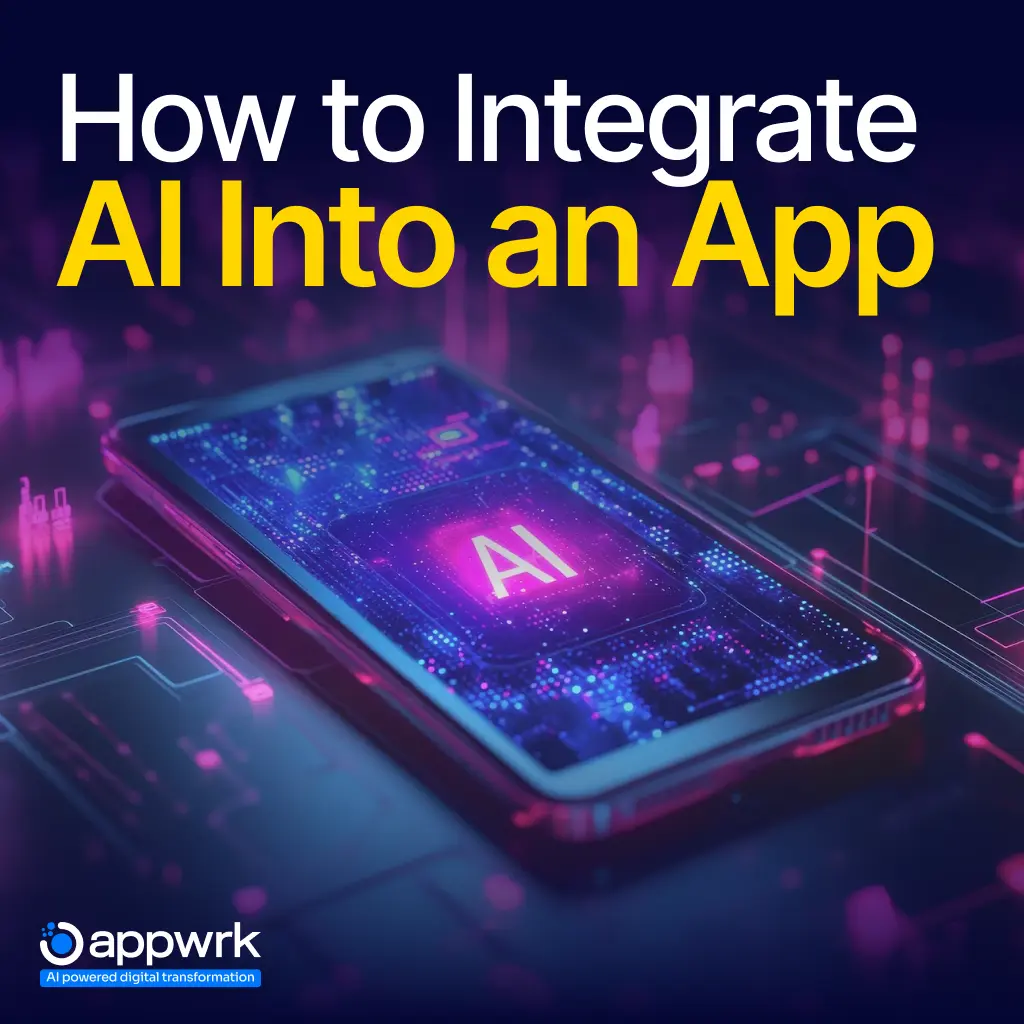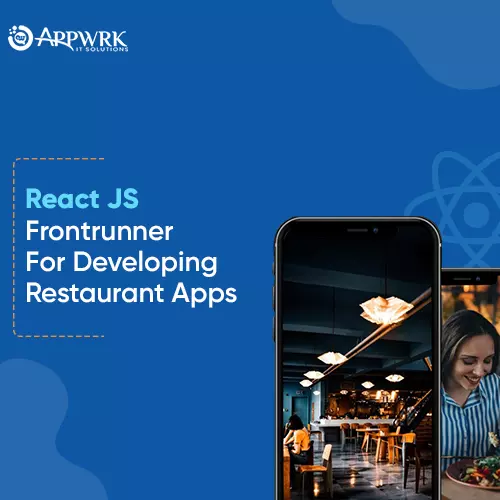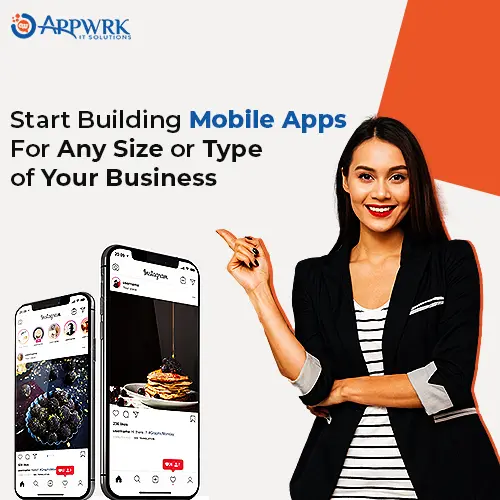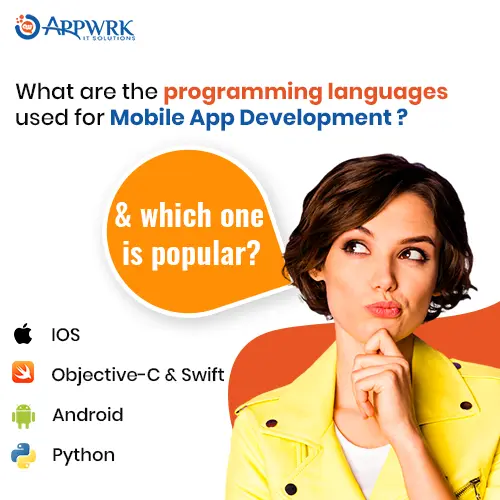Learn How to Create an IoT App: A Step-by-Step Guide
The Internet of Things, a concept that seemed like science fiction not too long ago, has swiftly become a tangible reality, bolstering efficiency, productivity, and convenience in various industries. With a surge in demand for IoT applications in real life, app development has come to the forefront. Today, people have become dependent on various IoT-enabled applications, from smart home devices to wearables. It has penetrated a myriad of sectors, including healthcare, logistics, transport, and retail industries, which has certainly transformed the way people live and work today.
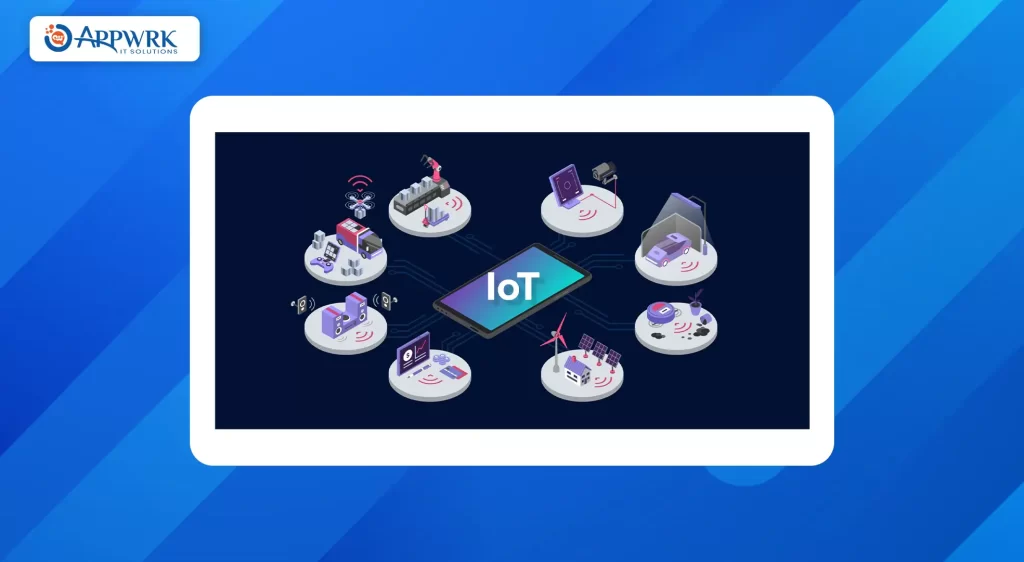
The transformation in recent years due to these IoT-enabled applications has led to the emergence of IoT app development, a field that is shaping the interconnected world! The power of IoT applications lies in their ability to seamlessly integrate data from numerous sources, process it, and offer meaningful outputs. This offers various businesses and industries limitless potential for creating IoT applications that can automate processes, enhance decision-making, and provide improved user experiences.
Why develop an IoT application? IoT application development is a rapidly growing field that has opened doors for businesses of all sizes. Therefore, with its vast array of applications across multiple industries, understanding IoT app development has become crucial. In this blog, we will delve into the IoT application development journey, where we will cover various aspects, which include major IoT components, challenges, best examples of Internet of Things apps, processes, and much more!

For those considering “how to create an IoT app on a tight budget?”, partnering with an experienced IoT app development company is key. These companies offer specialized Internet of Things app development services and the option to hire an IoT application development team tailored to specific project requirements. Leveraging tools to create an IoT app such as IoT app builder can further streamline the development process, allowing for cost-effective solutions without compromising on quality. With careful planning and the right resources, even projects with budget constraints can successfully navigate the intricate landscape of IoT application development.
Table of contents
- Why Create An Internet Of Things (IoT) Application?
- What You Need To Know About IoT App Development
- Areas With The Biggest Demand For IoT Applications
- Best Examples Of Internet Of Things Apps
- How To Create IoT Applications
- How Much Does It Cost To Make An IoT App?
- APPWRK IT Solutions – Your Solution To Create Your Dream IoT Application
- Conclusion
- FAQs
Why Create An Internet Of Things (IoT) Application?
Do you know that the IoT market is growing at a very fast pace? According to Statista:
The global Internet of Things (IoT) market worldwide was worth around US $182 billion in 2020 and is forecast to rise to more than US $621 billion in 2030, tripling its revenue in ten years. Isn’t that amazing?
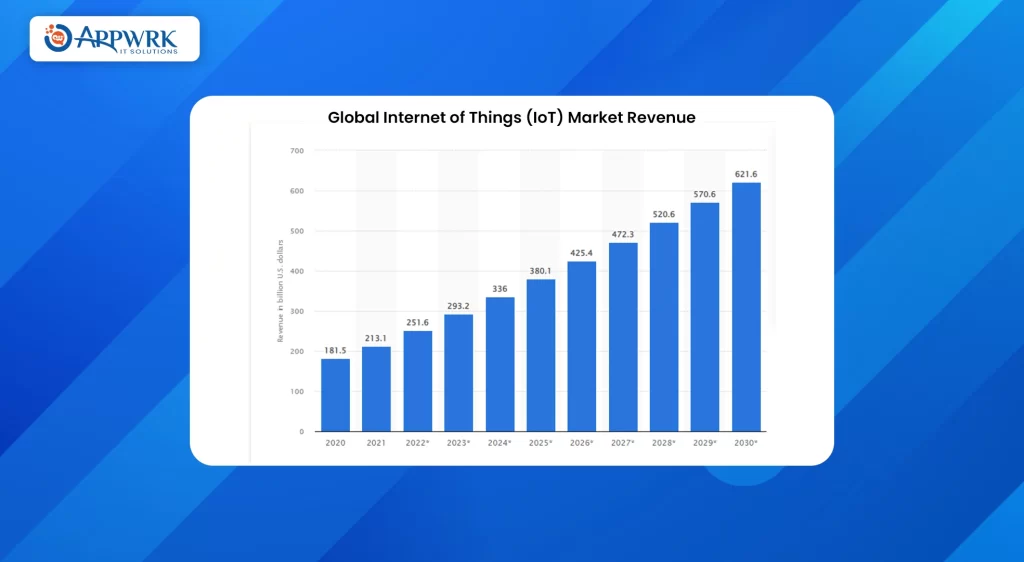
Other data provided by DataProt shows:
- It is estimated that the number of active IoT devices will surpass 25.4 billion in 2030.
- By 2025, there will be 152,200 IoT devices connecting to the internet per minute.
From the above information, you must have a clear picture of how IoT applications grabbed a larger portion of the market due to a plethora of benefits, including high-security systems, cloud platforms, and wireless smart sensors and networks. Create an App for the Internet of Things (IoT) to leverage these advantages in this digital era. Let us check out some other reasons to Build IoT applications for mobiles:
Enhanced User Experience
IoT apps enable seamless user-device interaction, often automating mundane tasks and providing personalized experiences. Developing applications for the Internet of Things (IoT) allows smart home applications to learn from users’ behavior over time, automating lighting, temperature, and security settings. By providing a superior, personalized user experience through IoT applications, businesses can enhance customer satisfaction, increase user retention, and, ultimately, build a loyal customer base.
Increased Efficiency
The usability of IoT apps has the potential to streamline business operations and increase efficiency significantly. They allow real-time monitoring and control of business processes, providing valuable insights into operational performance. Whether it’s tracking inventory in a warehouse, monitoring machinery in a factory, or managing fleet operations, IoT apps can help businesses optimize resource allocation, reduce downtime, and increase productivity. Entrepreneurs can leverage these efficiencies to offer competitive services and drive business growth.
Cost Savings
One of the most attractive benefits of IoT app development for businesses is cost savings. IoT applications can facilitate predictive maintenance for equipment, which can help avoid costly repairs and reduce downtime. Moreover, they can optimize energy usage in office buildings or factories, leading to significant savings. In logistics, IoT can enable route optimization, reducing fuel costs. These cost savings can have a substantial impact on a company’s bottom line. If you’re considering how to make IoT applications for your business, it’s crucial to focus on creating robust and efficient solutions that align with your specific needs and objectives.
Scalability
IoT applications are inherently scalable. As businesses grow and evolve, they can add more devices to their IoT network without major changes to the infrastructure. This flexibility makes IoT app development an attractive option for entrepreneurs who need solutions that can grow with their businesses. It allows companies to start small, test IoT deployments, and scale up as they see positive results.
Security
In the era of digital business, security is a top priority. IoT apps, when developed with security in mind, can provide robust protection for sensitive data. Businesses can use IoT technology to monitor their physical and digital assets in real-time, detect anomalies, and respond quickly to potential threats. This can not only prevent data breaches and protect the business’s reputation but can also provide peace of mind to customers and partners. For entrepreneurs, investing in secure IoT app development can be a significant trust builder in their relationship with their stakeholders.
What You Need To Know About IoT App Development
Major IoT Components
When discussing the Internet of Things (IoT), it’s crucial to understand the major components of the Internet of Things that contribute to its functioning. This understanding will aid in building robust IoT applications. Here are the major components:
Hardware
The hardware components are the tangible, physical devices of IoT development that are responsible for collecting data from the environment and transmitting it to the cloud. They can range from small sensors that measure temperature or humidity to complex machines like vehicles or industrial robots.
Some common types of hardware used in IoT development include:
- Sensors: Sensors are devices that collect data from the environment. They can measure things like temperature, humidity, light, and motion.
- Actuators: Actuators are devices that can control the environment. They can be used to turn on lights, open doors, or even control machines.
- Gateways: Gateways are devices that connect the hardware to the cloud. They convert the data from the sensors into a format that the cloud can understand.
Hardware devices in IoT often need to be low-power and efficient, since they may need to run on batteries and be able to process data quickly. They also need to be robust and durable, as they may be placed in challenging physical environments.
Cloud
Cloud computing plays a vital role in IoT, providing the infrastructure necessary to process and store the vast amounts of data generated by IoT devices. IoT devices themselves often have limited processing power and storage, so offloading these tasks to the cloud makes sense.
Cloud platforms can handle data ingestion, processing, storage, and analysis tasks associated with IoT. Some common cloud platforms used for IoT development include:
- Amazon Web Services (AWS)
- Microsoft Azure
- Google Cloud Platform
In addition to providing scalability and flexibility, cloud services often provide features like machine learning and analytics tools, which can help businesses derive valuable insights from their IoT data.
Network
The network component of IoT development is responsible for connecting the hardware to the cloud. The network can be a wired or wireless network. The choice of network technology depends on the specific requirements of the IoT application. Factors to consider might include the amount of data to be transmitted, power consumption, range, bandwidth, and whether the application requires real-time communication.
Some common networks used for IoT development include:
- Wi-Fi
- Bluetooth
- Zigbee
- Low-power wide-area networks (LPWANs) like LoRa and Sigfox
Software
Software is what brings IoT systems to life. The software component of IoT development is responsible for controlling the hardware and communicating with the cloud. The software can be used to collect data from the sensors, control the actuators, and analyze the data.
The software component consists of three parts:
- Embedded software often needs to be highly efficient and reliable, as it may need to run on low-power devices and perform critical tasks.
- Middleware, such as IoT platforms, helps manage the devices, handle data ingestion and processing, and ensure secure communication.
- Applications can take many forms, from mobile apps that let users control their smart home devices to complex enterprise software that uses IoT data to optimize business processes or make strategic decisions.
IoT Challenges
In 2023, the IoT landscape will continue to evolve rapidly, but certain challenges will persist. Here are the key issues facing the field:
Data Privacy And Security
Security is a significant concern in IoT. Devices can be physically tampered with, and data transmissions can be intercepted. According to the data provided by Statista:
Globally, 33 percent of respondents had IoT security concerns regarding attacks on devices in 2019. Generally, 99 percent of respondents have IoT data security concerns that also refer to a lack of skilled personnel and sensitive data protection as their top worries.
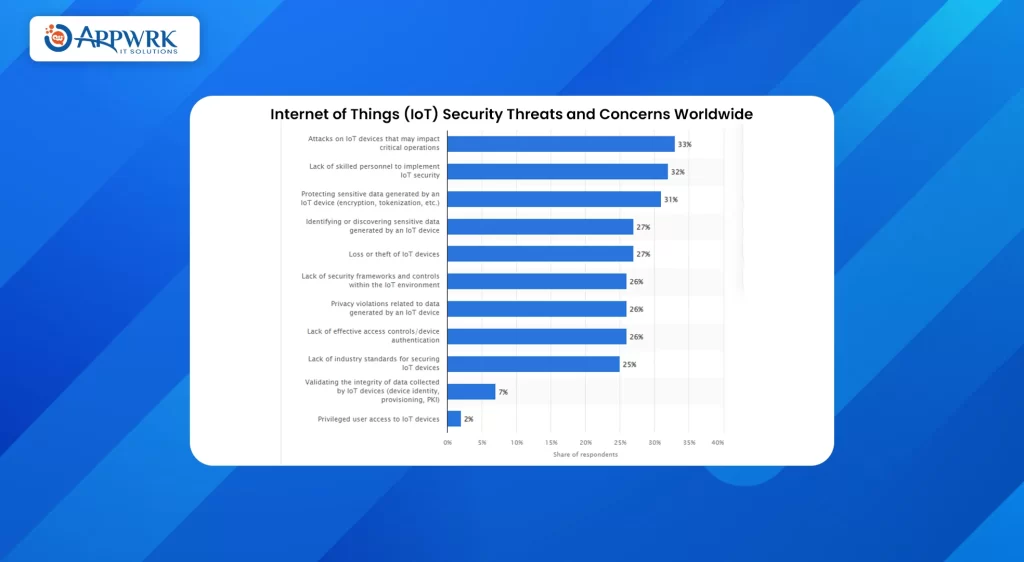
With the increased deployment of IoT devices, there is a corresponding rise in the volume of data being collected and transmitted. While this data is valuable for providing services and insights, it also poses significant privacy and security risks. Cyberattacks targeting IoT devices are on the rise, and there are concerns about how personal data is collected, used, and shared. Ensuring robust encryption, secure communication protocols, and proper data handling practices are ongoing challenges.
Interoperability
The IoT landscape is marked by a lack of standardization, with different devices and systems using various protocols and standards. This diversity can make it challenging to ensure interoperability between devices, hampering the development of integrated IoT systems and applications. Industry-wide standards would help, but reaching an agreement on these is a complex process involving many stakeholders.
Energy Efficiency
Many IoT devices are battery-powered, making energy efficiency a crucial concern. There’s a need for devices that can operate for long periods on small batteries or even harvest energy from their environment. This is an ongoing challenge that requires improvements in both hardware and software.
Despite these challenges, the potential benefits of IoT are enormous. By understanding and addressing The Challenges of Building IoT Applications, IoT applications can offer significant value to users as well as businesses and contribute to the advancement of this exciting field.
Areas With The Biggest Demand For IoT Applications
Healthcare
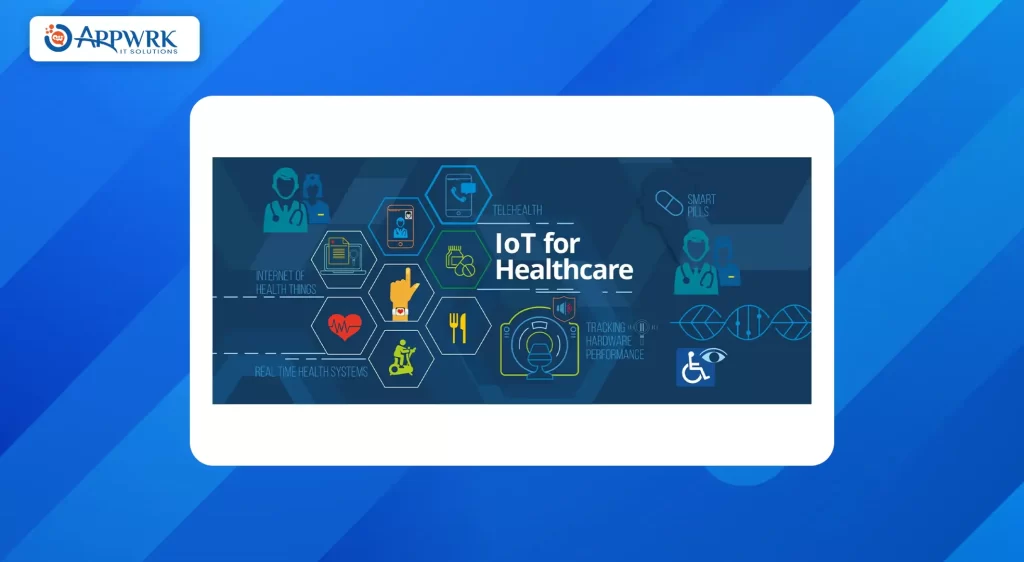
IoT applications in healthcare have made a significant impact in recent years. Zion Market Research data indicates that the global IoT healthcare market size accounted for US $10,778.2 million in 2020 and is expected to reach US $26,213.2 million by 2028, growing at a CAGR of 11.2% from 2021 to 2028.
The ability to collect, analyze, and act on patient data in real-time has the potential to revolutionize healthcare services and patient outcomes. Let’s check out how IoT has evolved the healthcare sector.
- Patient Monitoring: IoT devices like wearables, heart monitors, or glucose monitors allow real-time tracking of patients’ health metrics. Data collected from these devices can help medical professionals make informed decisions about the patient’s treatment plan.
- Telemedicine: IoT technology enables remote healthcare services, allowing patients to consult with healthcare providers from the comfort of their homes. This not only makes healthcare more accessible but also helps prevent overcrowding in hospitals.
Logistics And Transportation
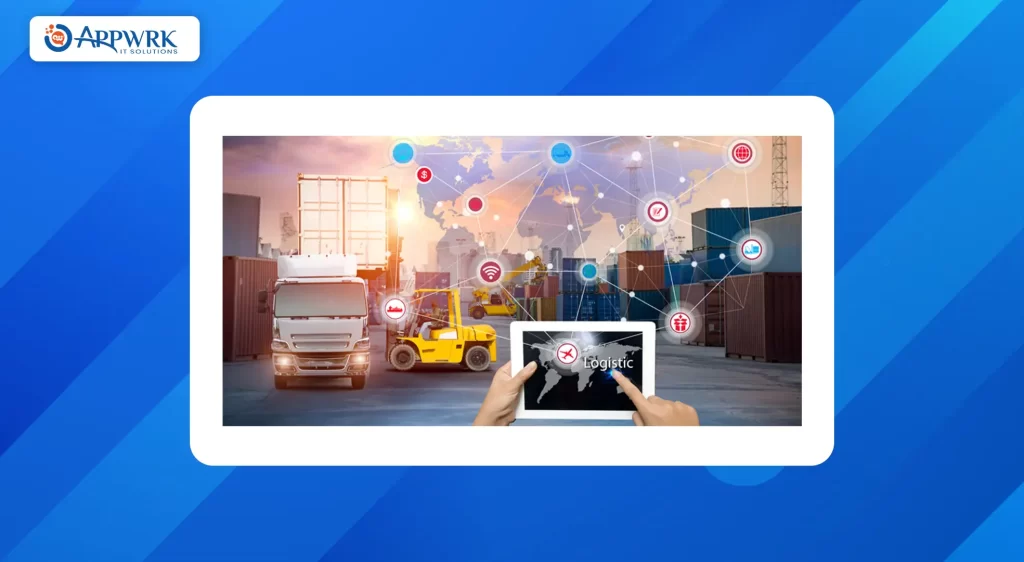
IoT applications have made significant strides in the logistics and transportation sector, particularly in areas like fleet management and supply chain operations.
- Fleet Management: IoT devices provide real-time tracking of vehicles, which helps in route optimization, reducing fuel consumption, and efficient management of the fleet.
- Supply Chain Operations: IoT has streamlined supply chain operations by providing real-time tracking of goods, reducing the chances of misplacement, and ensuring timely delivery.
Retail
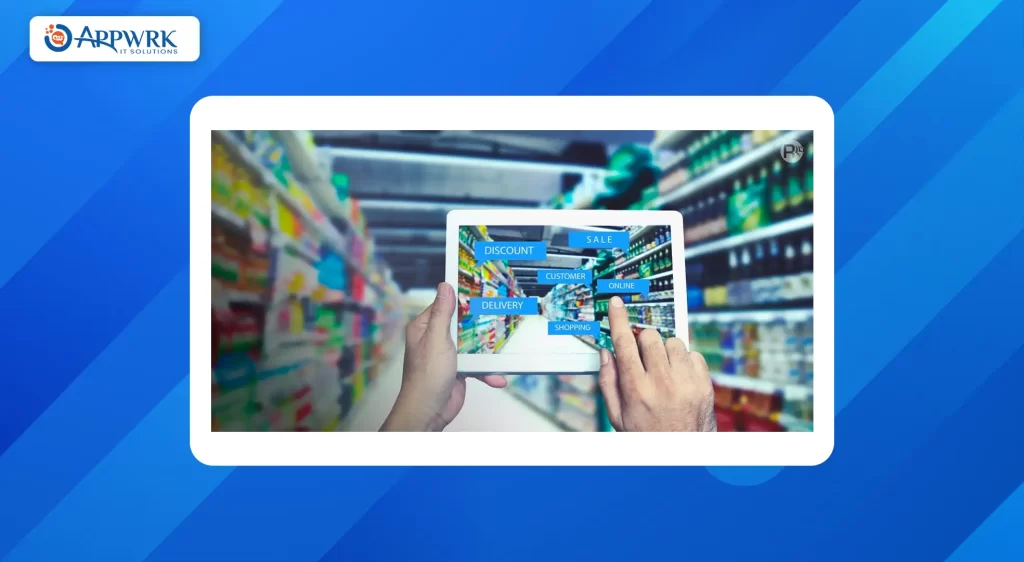
The retail industry is leveraging IoT to improve customer experiences, manage inventory better, and gather crucial consumer data to make informed business decisions.
- Smart Shopping: Retailers use IoT devices like smart carts, virtual mirrors, and automated checkouts to provide an enhanced shopping experience to customers.
- Inventory Management: IoT-enabled smart shelves and RFID (radio-frequency identification) tags help in real-time tracking of inventory, ensuring that the products are always stocked and alerting the staff about low-stock situations.
Smart Home
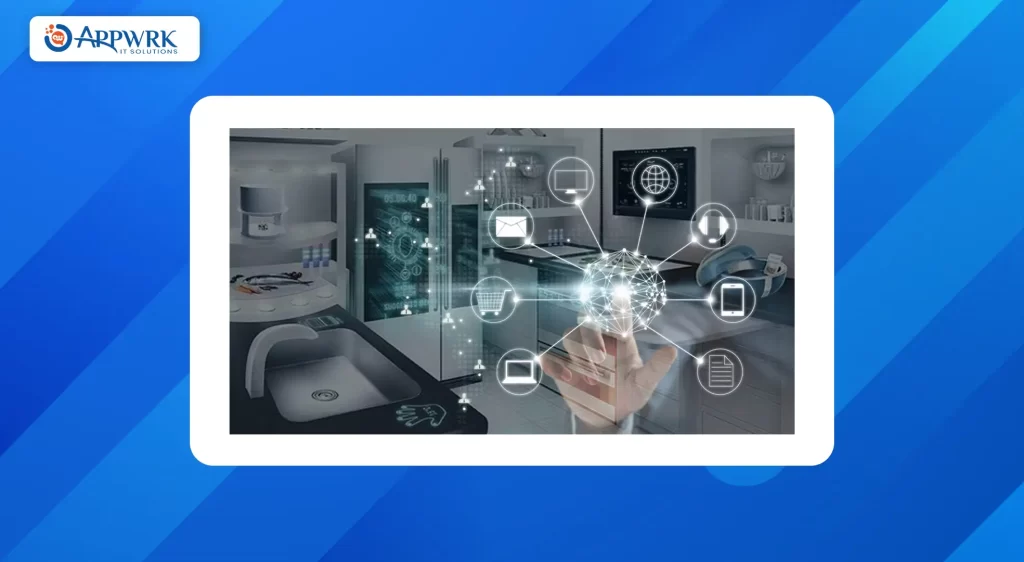
Smart home is probably the most well-known application of IoT. It includes the use of internet-connected devices to monitor and control systems and appliances in homes.
- Home Automation: IoT devices like smart thermostats, lighting systems, and home assistants like Amazon Echo or Google Home allow users to control their home appliances remotely.
- Security Systems: IoT has also been extensively used in home security systems. Devices like security cameras, smart locks, and alarm systems can be interconnected and monitored remotely, enhancing the overall security of the home.
Best Examples Of Internet Of Things Apps
Nest
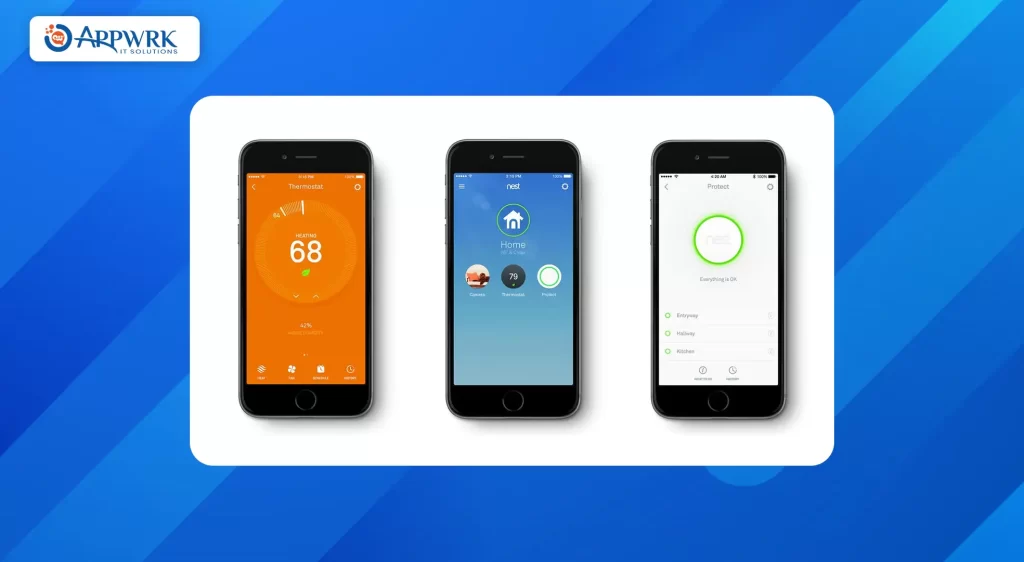
Nest (Android, iOS) is a subsidiary of Google, and it’s best known for its smart home products, especially the Nest Learning Thermostat. This Internet of Things (IoT) app allows users to remotely control their home’s temperature using their smartphone or other devices.
The Nest app learns the user’s daily routine and temperature preferences over time and adjusts your home’s temperature accordingly. It can help save energy by reducing heating and cooling when no one is home. Apart from this, it also provides products such as smart doorbells, cameras, and security systems, all of which can be managed through the Nest app. This application thus centralizes control of various smart devices, making it easier to manage the home.
Blossom

Blossom (Android, iOS), one of the best IoT applications examples, offers smart watering controllers. The Blossom app allows users to control their sprinklers remotely from their smartphones. Blossom devices utilize real-time weather data to create optimized watering schedules, ensuring their garden receives the right amount of water while conserving water.
The app lets the user set up watering schedules and monitor water usage. It can also adjust watering schedules based on changing weather conditions. This app is a good example of how IoT can make everyday tasks more efficient and environmental friendly.
Whistle

Whistle (Android, iOS) is an IoT app designed for pet owners. It uses a device attached to a pet’s collar to track their location and monitor their activity. The Whistle app then provides insights into their pet’s behavior, helping them keep it safe and healthy.
The app can notify the owner if his pet leaves a designated safe area and help track them down if they get lost. It also monitors the pet’s activity and rest, assisting the owner in ensuring they are getting enough exercise and identifying potential health issues. Whistle is a great example of how IoT technology can be used to improve the care of pets.
How To Create IoT Applications
Building an IoT application is a complex process that involves a range of technologies and skills. However, by carefully considering the following aspects, you can learn how to develop IoT applications effectively and create an IoT application successfully:
Choose The Right IoT App Development Agency:
Selecting a reputable IoT app development agency is vital. Consider their expertise, past projects, and client testimonials. A reliable agency brings a wealth of experience, ensuring your project benefits from industry best practices and the latest technological advancements.
Hire Skilled IoT App Developers
Building a proficient development team is key to success. Look for developers with expertise in IoT technologies, programming languages, and app design. Verify their track record and ensure they stay updated with the latest trends in IoT app development.
Choose A Platform
The first step in creating an IoT app is choosing the right platform. The platform should offer a wide range of features, from device control to data collection and processing, to security measures. It should also be able to integrate with a variety of hardware. Examples of such platforms include Microsoft Azure IoT Suite, IBM Watson IoT, and Google Cloud IoT. Consider factors such as ease of use, scalability, support for different communication protocols, and the ability to integrate with other systems when choosing a platform.
Choose The Hardware
Hardware selection is crucial for IoT applications as these devices will collect the data your application will work with. Developing IoT applications requires careful consideration of hardware selection, as these devices play a crucial role in collecting the data your application will process. These could be sensors, actuators, cameras, or any device that can collect data and send it to your platform. When choosing hardware, you must consider factors such as the environment the hardware will operate in, the type of data it needs to collect, its energy requirements, and its communication capabilities. It’s also important to choose hardware that is compatible with your chosen platform.
Cost Considerations: How Much Does it Cost to Create an IoT App?
Understand the cost factors associated with IoT app development, as they can have a significant impact on the cost of developing an IoT app. Consider development, testing, maintenance, and potential scalability needs. Transparent communication with your development team or agency is essential to manage and optimize costs effectively.
Think Of Scalability In Advance
When designing your IoT app, you need to consider scalability from the outset. The number of connected devices can grow rapidly, and your application needs to be able to handle this growth without performance degradation. This involves careful architecture design, including the use of cloud services, to ensure that your application can scale up or down as needed. Additionally, plan for potential hardware updates or changes that may require your application to adapt.
Make Sure Your App Is Fast
Speed is a key consideration for IoT applications. Users expect real-time or near-real-time performance from IoT systems. To achieve this, you may need to use cutting-edge computing techniques, where data processing is done closer to the source rather than in a centralized location. Efficient data processing algorithms and good network design can also help improve speed in building IoT apps. Regular testing and optimization are crucial to maintain a good speed.
Take Good Care Of Security
Security is a critical aspect of IoT applications. These applications often handle sensitive data, and the devices can be vulnerable to cyber-attacks. Therefore, robust security measures need to be implemented, including secure communication protocols, strong authentication and authorization mechanisms, and regular security updates. Consideration should also be given to privacy issues, ensuring that data is collected and used in a way that respects user privacy. Security in IoT Application Development is paramount to safeguarding both the devices and the sensitive information they handle.
Create a Custom Internet of Things Application
Customize your IoT application to create an engaging Internet of Things application, meeting specific user needs and industry requirements. Customization allows for the integration of unique features and functionalities that set your app apart. Work closely with stakeholders to understand their preferences and develop a personalized solution.
How Much Does It Cost To Make An IoT App?
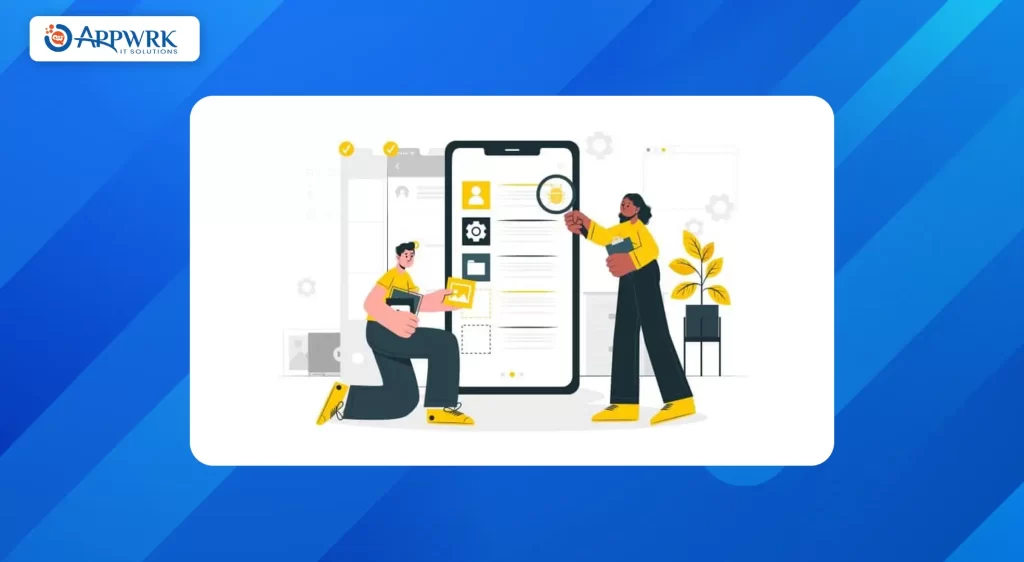
The cost of developing an IoT app may vary depending on the factors. It is important to carefully consider all of the below-mentioned factors when budgeting for the Internet of Things application development. Additionally, considering average rates for developing IoT applications is crucial in estimating the overall project cost. Furthermore, attention to IoT app design and user interface is essential for delivering a successful and user-friendly solution. By doing so, you can ensure that you are getting the best possible value for your investment. When asking, “How much does it cost to develop an IoT app?” some of the factors that affect IoT app development costs are:
- The complexity of the application.
- IoT app development platform that you opt for.
- IoT app tools used.
- The number of devices that will be connected to the application.
- The type of hardware that will be used.
- The location of the development team.
- The level of expertise of the development team.
- The need for data security.
- The need for regulatory compliance.
- The need for ongoing maintenance and support.
- IoT app design and user interface.
Based on the above factors, it must be clear that IoT mobile app development requires proper cost estimations. If you want IoT app development services from India, the cost may start from $999. APPWRK IT Solutions, a leading IoT application development company, has a proven track record of building successful mobile apps for clients worldwide, including those in the US, with the price starting from just $999! Contact us today for further assistance.
APPWRK IT Solutions – Your Solution To Create Your Dream IoT Application
IoT app development is essentially creating a new frontier for businesses, enabling them to achieve unprecedented levels of automation, efficiency, and intelligence. However, to utilize the full advantage of this technology, it is important to hire an exceptional IoT app development company that understands your specific needs and goals. Well, worry not because APPWRK is uniquely positioned to help you succeed in your digital venture! Our team of seasoned developers uses the latest IoT app development tools and technologies. It follows industry trends to ensure that your IoT app is not just ready for today but also for the future.
APPWRK IT Solutions is a mobile app development company and a trusted partner in your long-term growth and progress journey. Our expert mobile designers and developers have completed over 2000 projects globally that have helped businesses scale up development, design, and digital marketing proficiency. We harness the power of cutting-edge technology to transform your business idea into reality with our top-notch IoT application development services. We understand the complexity and competitiveness of the IoT industry, and we’re available in all time zones to help you navigate it successfully.
Conclusion
As we delve deeper into the era of digital connectivity, IoT app development stands as a pillar of innovation. It holds enormous potential to transform day-to-day lives and industries by making devices smarter and processes more efficient. While the journey of creating an IoT mobile application comes with its unique set of challenges, the rewards it offers in terms of operational efficiency, cost savings, and improved user experiences are truly compelling. The future of IoT app development is filled with immense possibilities, making it a rewarding space for businesses and developers alike.
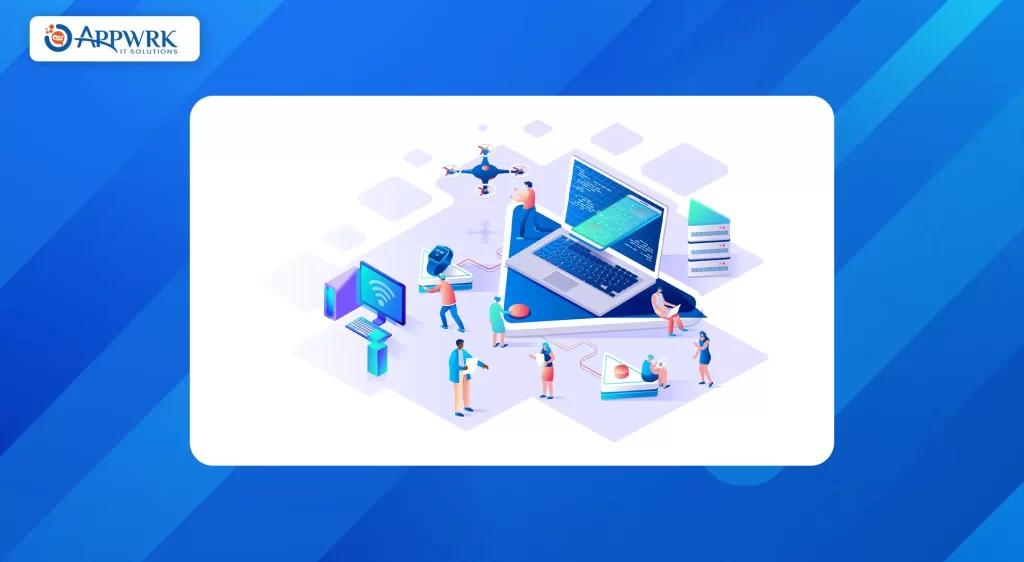
As we look towards the future, it’s clear that Internet of Things app development will continue to evolve and shape the business landscape. For businesses ready to embrace this technology, the potential rewards are immense – from operational efficiency and cost savings to customer satisfaction and business growth. Through the exploration and adoption of IoT app development, you can position yourself at the forefront of the digital revolution, primed to capitalize on millions of opportunities that IoT presents.
FAQs
What is IoT app development?
IoT app development involves creating applications that allow devices to communicate and interact over the internet. These apps can collect, send, and act on data they acquire from their environments using embedded sensors, processors, and communication hardware.
How to develop an IoT mobile app?
Developing an IoT mobile app involves several steps, starting with identifying a problem or need that IoT can address. Next, choose the right hardware and platform, ensure that the devices can connect to the internet, and then develop the application software, considering factors like user interface, data storage, and security.
How much does it cost to build an IoT app?
The cost of building an IoT app can vary significantly depending on factors like the complexity of the app, the hardware involved, the development platform, and security needs. However, if you want IoT app development services from India, the cost may start from $999. APPWRK IT Solutions, a leading IoT application development company, has a proven track record of building successful mobile apps for clients worldwide, including those in the US, with the price starting from just $999! Contact us today for further assistance.
What is IoT vs AI?
IoT refers to the network of physical devices connected to the internet for data exchange, while AI involves creating systems that can perform tasks that usually require human intelligence. Although distinct, IoT and AI often work together, with AI helping to analyze and make sense of the vast amount of data generated by IoT devices.
What software does IoT use?
IoT uses a wide range of software, including operating systems (like RIOT, Ubuntu Core), databases for storing data (like MySQL, MongoDB), and platforms that provide tools and infrastructure for developing an IoT Application (like Microsoft Azure IoT, AWS IoT Core).
Why is IoT important in mobile app development?
IoT is important in mobile app development as it provides a way for the app to interact with the physical world. This opens up new possibilities for app functionality, from controlling smart home devices to collecting health data from wearables, making apps more useful and engaging for users. This intersection of IoT and mobile apps allows for innovative features and services, enhancing the overall user experience and extending the reach of app capabilities into the realm of connected Internet of Things devices.
What are the 3 advantages of the IoT?Three advantages of IoT are:
– Increased Efficiency: IoT devices can automate tasks and provide real-time operational insights, boosting productivity.
– Cost Savings: IoT applications can lead to cost savings in areas like energy consumption and predictive maintenance.
– Enhanced User Experience: IoT can personalize user experiences, making devices smarter and more intuitive to use.

About The Author

